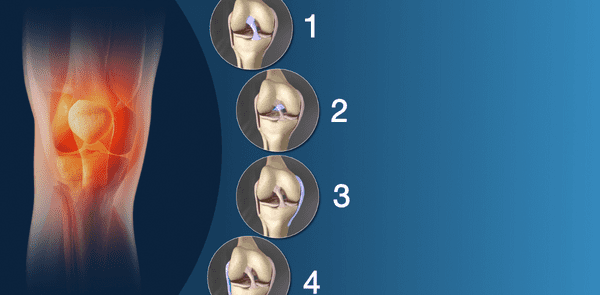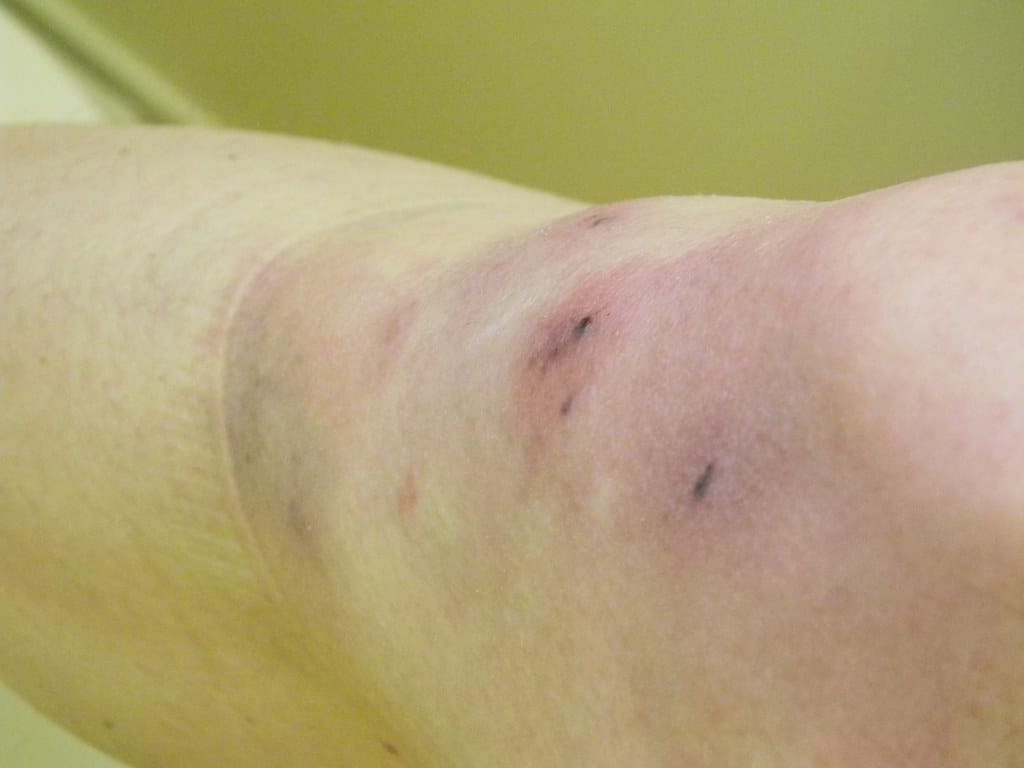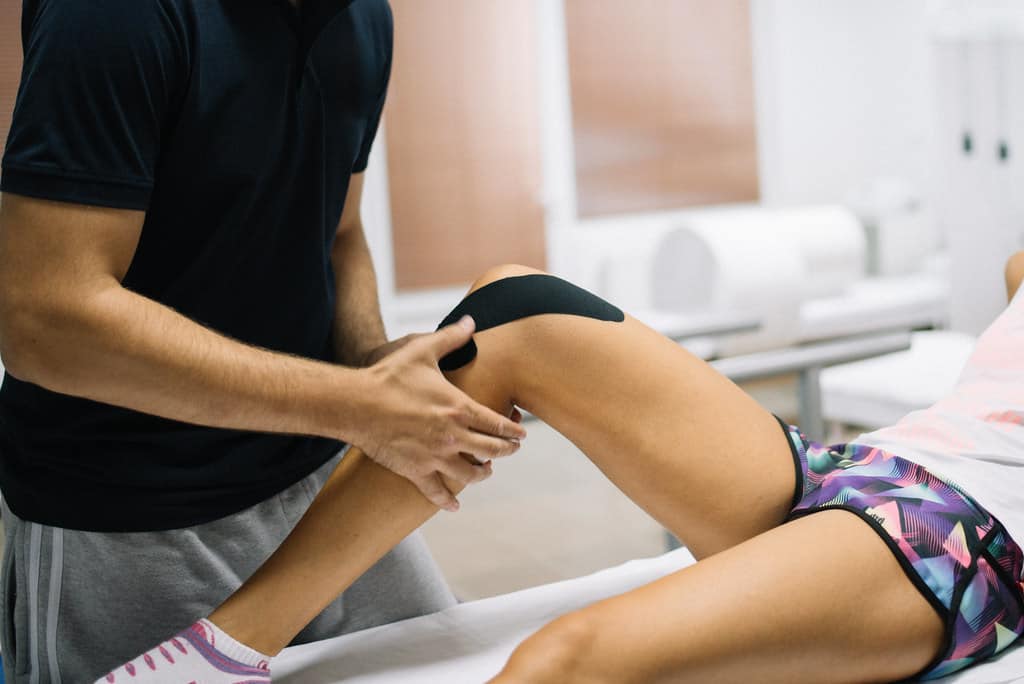How do I know if I sprained my knee?
The knee is one of the largest and most complex joints in the human body. It connects the thigh bone (femur) to the shin bone (tibia), fibula (the outer side of the shin), and kneecap.
It can extend fully and lock, allowing leg bones to bear weight and offer mobility. At the same time, it can be particularly vulnerable when exposed to injury. Subjected to torn or overstretched ligaments, for one, can result in knee sprains.
Dealing with this condition can be painful and could lead to arthritis if overlooked. To understand common knee injuries, including the symptoms and treatments, read on.
Knee Ligament Injury
 (Image Credit: Wikimedia Commons)
(Image Credit: Wikimedia Commons)
Knee ligaments are bands of tissue that connect the thigh bone to the lower leg bones. These connective tissues are tough and flexible, holding the knee joint together.
But the knees aren’t exempt from tear injuries. They are most susceptible during sports and physical activities or an accident, e.g. a fall. Enter knee sprains, which may hurt a lot and limit movements.
There are four major ligaments in the knee that are prone to injury:
- Anterior cruciate ligament (ACL). The one that connects the thigh bone to the shin bone. It’s one of the key ligaments that help stabilise the knee joint. Yet, it’s also the most commonly injured one.
- Posterior cruciate ligament (PCL). A powerful ligament that links the thigh bone to the shin bone. It prevents the knee joint from posterior instability. Rarely injured except in car accidents.
- Lateral collateral ligament (LCL). Found on the outer side of the knee and runs from the top of the fibula to the outer part of the lower thigh bone. The LCL keeps the outer side of the joint of the knee stable. Injury is often caused by pressure.
- Medial collateral ligament (MCL). Run from the inside surface of the supper shin bone to the inner of the bottom thigh bone. It’s ligaments that keep the shin bone or tibia in place. The MCL is usually injured by stress or pressure on the outside part of the knee.
If one of these ligaments is torn or overstretched, a knee sprain may occur. And if you have sprained yours, this only means the structures within your knee joint are injured. But how did you end up this way?
Causes
Any level of activity that forces the knee out of its natural position can cause a sprain. The ligament affected also depends on the direction your leg is pulled.
Contact sports like soccer, basketball, or gymnastics often target the ACL. A sudden jump or twisting, or over-straightening of the knee can also cause injury. The PCL, in contrast, can be injured in a car collision, e.g. when your knee hits the dashboard. Also, in a sport where the knee front is hit while bent – or falling hard.
An LCL sprain occurs when it receives a blow, although it’s less common as the other leg protects this area. A pang in the MCL is usually caused by something hitting the leg from the side or a fall that causes the lower leg to twist.
Symptoms
Symptoms may vary depending on which ligament was sprained. For an ACL sprain, for one, you may hear a popping sound at the time you injured your knee.
If you sprained your PCL, the back of your knee might hurt, and kneeling isn’t an option. For LCL and MCL sprains, it may feel like buckling toward and away from the affected ligament. The knee will also likely be tender where the injury eventuated.
Common sprained knee symptoms include:
- Bruising
- Inability to put weight on the joint
- Looseness in the joint
- Muscle spasms
- Sharp pain (especially after a direct blow or twist)
- Swelling (within the first 24 hours after the injury)
- Weakness
If your knee is feeling it’s going to “give out” while standing or walking, don’t further the damage and take a rest. Otherwise, the pain worsens with activity.
A comeback may still be possible, especially with the right medical treatment. For this, seeking a medical professional is recommended.
Diagnosis
While knee sprains can be treated at home, you should see a doctor immediately if the pain is so severe. This is especially advisable if it hinders you from walking or bending the knee or you can’t stand up.
You are expected to go through a physical examination during your check-up. This way, the doctor can confirm the symptoms, such as swelling and bruising. At the same time, they’ll ask you to move it around to determine your mobility and compare it to your uninjured knee.
Telling them what you were doing when the injury happened also helps. Whether you heard a pop – or how long it took to become so painful that you can’t walk.
Throughout, your doctor may recommend you get imaging tests, such as an X-ray, as well. This will show if there’s a broken bone or simply will allow the physician to see the inside of your knee. This includes the ligaments and other tissues that support it.
Note: Knee sprains are rated by severity. An overstretched ligament is grade 1, mildly damaged and slightly stretched. A ligament with a partial tear is grade 2. A complete tear, or separated ligament or severely torn, is considered grade 3.
Treatment
The treatment your doctor recommends will depend on the severity of your injury. In most cases, you won’t need surgery unless the rule out is grade 3.
But the fastest option is resting at home and then physical therapy. The RICE method, for one, can help while waiting for medical attention:
- Rest. Resting helps minimise the risk of further injury to the affected knee.
- Ice. Ice pack application – wrapped in a towel or a cool compress – also works wonders. Apply to the affected knee in fifteen-minute intervals, pausing between each session. Icing the joint helps reduce any swelling, as well.
- Compression. An elasticised bandage can provide mild compression, helping reduce inflammation. For this method, avoid wrapping the bandage so tight.
- Elevate. Elevate the injured knee with a pillow to prevent blood from pooling in the affected area.
Your doctor may recommend an over-the-counter pain medication to relieve the pain. And if the ache is debilitating, they may prescribe a stronger alternative. Always seek out their professional opinion first before taking anti-inflammatory medications.
And if surgery is necessary, it’ll be done arthroscopically – with a few small incisions made. Recovery times may take as long as four to six months before you can go back to your normal activities. You may also need to attend physical therapy sessions to restore your range of motion. Note: Most grade 1 and 2 knee sprains can heal within two to four weeks.
Get medical care as soon as possible and follow your doctor’s instructions. Wait for your knee to completely heal before resuming playing sports. Also, perform the recommended physical therapy exercises for faster recovery.



 (
( (
(